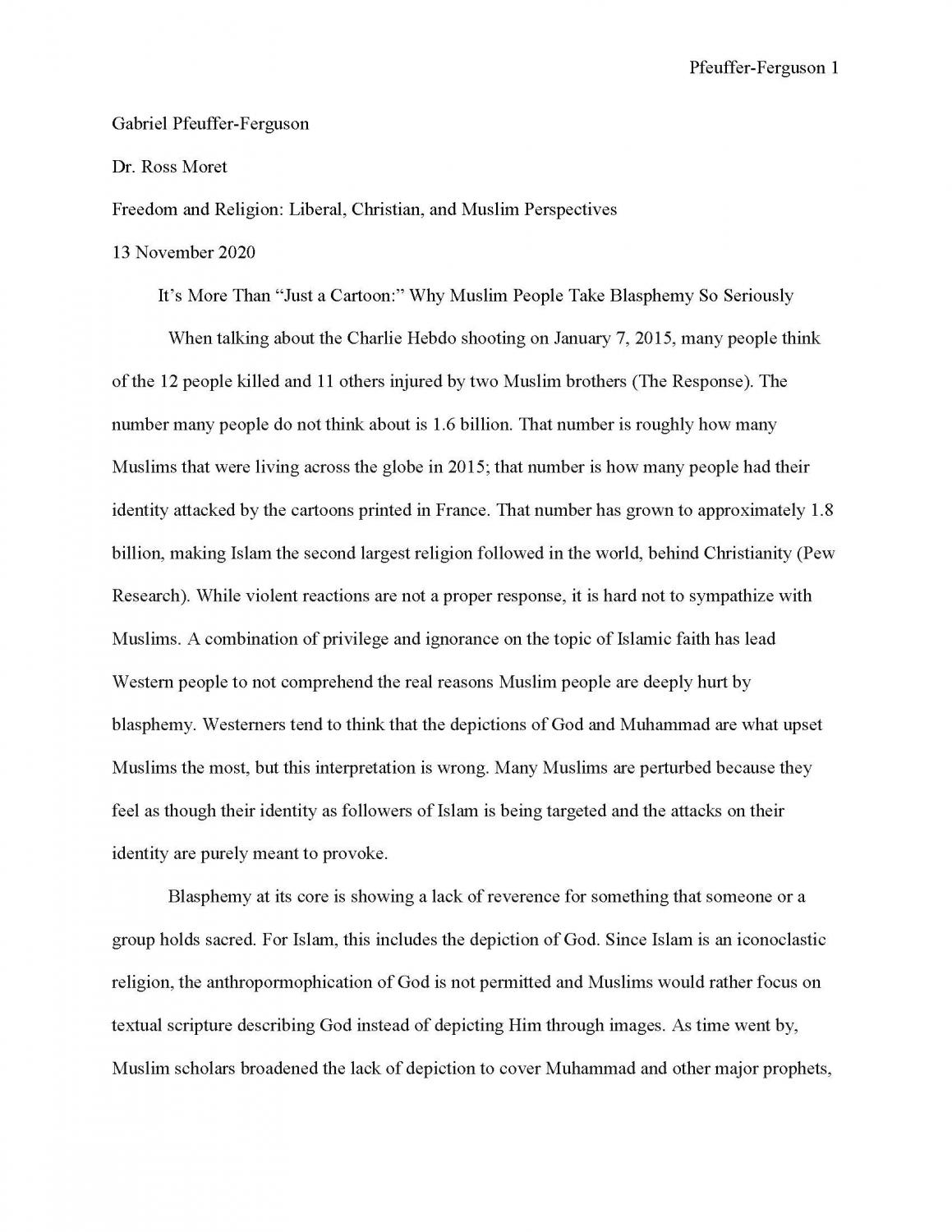
It's More Than "Just a Cartoon":
Why Muslim People Take Blasphemy So Seriously?
March 15, 2021
Student: Gabriel Pfeuffer-Ferguson
Major: Interdisciplinary Social Sciences, with a concentration in Urban Studies
"All too often, minority groups face heavy attacks from outside majority groups. A prime example of this can be found with blasphemy against Muslims, and we can specifically look at instances such as the Charlie Hebdo instance in France. In my paper, I cover this specific instance and discuss some of the generalizations of blasphemy and some of the reasoning why Muslims are so upset. I tackle this issue through the framework of Jonathan Haidt’s Moral Foundation Theory and discuss how the various foundations play a role in the effects of blasphemy."
"Attacks, such as the Charlie Hebdo cartoons, are blatantly disrespectful as a form to force secular society on a group of people who hold their faith so sacred. This issue is not simply because of the cartoons depicting Muhammad in a mocking way; this issue stems from attacking a group that is already marginalized in France and other areas across the globe. These attacks are similar to racist, homophobic, and sexist slurs." - Gabriel Pfeuffer-Ferguson
Presentation
Read Gabriel Pfeuffer-Ferguson's presentation paper on "It's More Than 'Just a Cartoon:' Why Muslim People Take Blasphemy So Seriously"
Works Cited
Akyol, Mustafa. “Islam’s Problem With Blasphemy.” The New York Times, 13 Jan. 2015, www.nytimes.com/2015/01/14/opinion/islams-problem-with-blasphemy.html.
Charlton, Angela. “Charlie Hebdo: Proud to Provoke Islamists, despite Violence.” AP NEWS, Associated Press, 29 Oct. 2020, apnews.com/article/charlie-hebdo-france-provoke-islamists-39c19096470e74cf5ed1ff8e5c4ac0db.
“The Future of World Religions: Population Growth Projections, 2010-2050.” Pew Research Center's Religion & Public Life Project, 27 Aug. 2020, www.pewforum.org/2015/04/02/religious-projections-2010-2050/.
Gamble, Andrew. “The Western Ideology.” Government and Opposition, vol. 44, no. 1, 2009, pp. 1–19., doi:10.1111/j.1477-7053.2008.01273.x.
Haidt, Jonathan. The Righteous Mind: Why Good People Are Divided by Politics and Religion. Penguin Books, 2013.
LaCasse, Alexander. “How Many Muslim Extremists Are There? Just the Facts, Please.” The Christian Science Monitor, The Christian Science Monitor, 13 Jan. 2015, www.csmonitor.com/World/Security-Watch/terrorism-security/2015/0113/How-many-Muslim-extremists-are-there-Just-the-facts-please.
Lipka, Michael. “Muslims and Islam: Key Findings in the U.S. and around the World.” Pew Research Center, Pew Research Center, 30 May 2020, www.pewresearch.org/fact-tank/2017/08/09/muslims-and-islam-key-findings-in-the-u-s-and-around-the-world/.
Rawls, John. A Theory of Justice. Universal Law Publishing Co Ltd, 2013. “The Response.” Encyclopædia Britannica, Encyclopædia Britannica, Inc., www.britannica.com/event/Charlie-Hebdo-shooting/The-response.
Schumm, Walter, and Alison Kohler. Social Cohesion and the Five Pillars of Islam: A Comparative Perspective. www.researchgate.net/profile/Walter_Schumm/publication/265431770_Social_Cohesion_and_the_Five_Pillars_of_Islam_A_Comparative_Perspective/links/568acad708aebccc4e1a291f/Social-Cohesion-and-the-Five-Pillars-of-Islam-A-Comparative-Perspective.pdf.
Stout, Jeffrey. “The Contested Sacred.” Commonweal Magazine, 3 Nov. 2020, www.commonwealmagazine.org/contested-sacred.


